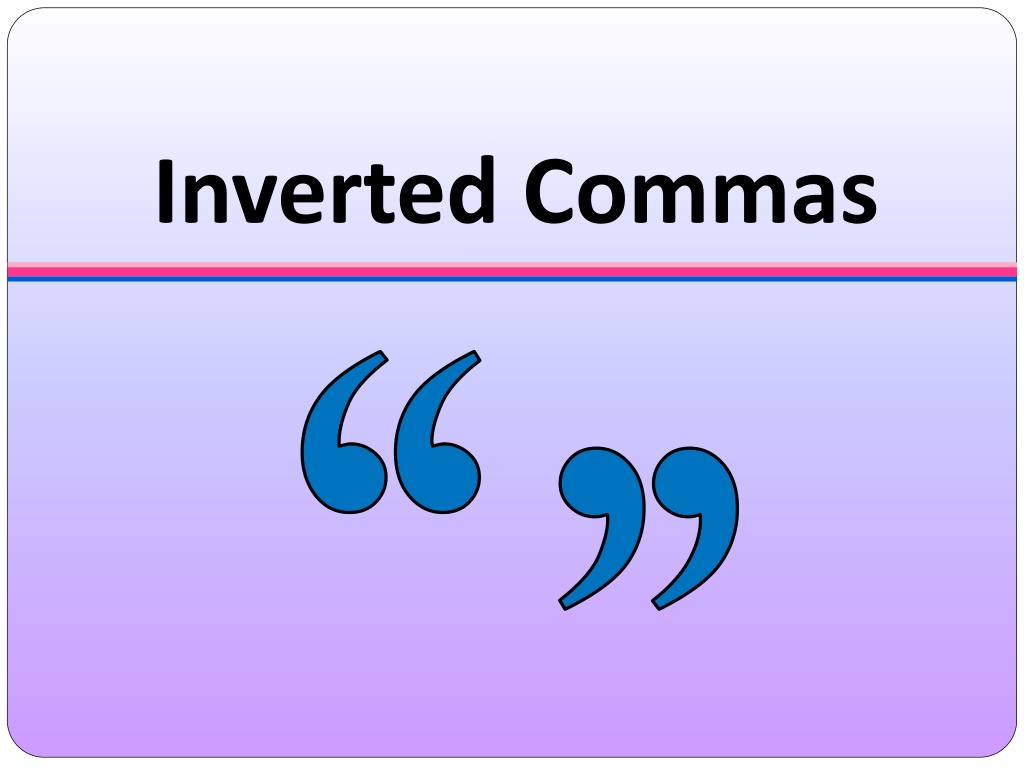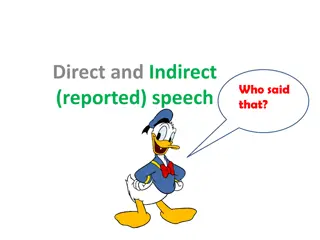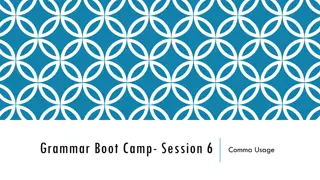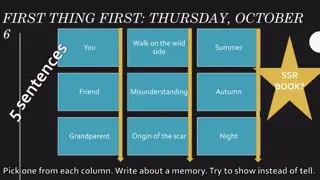Mastering Punctuating Direct Speech with Inverted Commas
Learn the rules for punctuating direct speech using inverted commas or speech marks. Understand how to correctly format speech sentences by placing commas, question marks, or exclamation marks within the quotes. Practice different examples to enhance your skills in using inverted commas effectively.
Uploaded on Sep 10, 2024 | 0 Views
Download Presentation

Please find below an Image/Link to download the presentation.
The content on the website is provided AS IS for your information and personal use only. It may not be sold, licensed, or shared on other websites without obtaining consent from the author. Download presentation by click this link. If you encounter any issues during the download, it is possible that the publisher has removed the file from their server.
E N D
Presentation Transcript
Inverted Commas Inverted commas are also known as speech marks. They are used to show when someone is speaking. Although it may look complicated, by following just a few simple rules you can become an expert at punctuating direct speech.
Rules for Punctuating Direct Speech 1. Place around the words which are spoken. 2. Use a capital letter at the start of a speech sentence (even if it is in the middle of another sentence). 3. Before you close your inverted commas use a comma, question mark or exclamation mark to separate what was said from the speaker. 4. If a new person speaks, start a new line.
For example: Should we tell the humans we can speak English? asked Stuart. Kevin replied, No, definitely not. http://www.wdsu.com/image/view/-/18289490/medRes/1/-/maxh/480/maxw/640/-/b76s38/-/Minions.jpg The punctuation placed before closing the inverted commas is a ? ? as Stuart asked a question No is capitalised because it is the start start of the speech sentence.
For example: You ll win then, murmured Emery, you re much faster than I am. I ll race you there! said Isla. you re doesn t need a capital letter because it is not not the start of the speech sentence. Despite coming after an ! , said is not not capitalised.
Punctuating Direct Speech Can you punctuate the speech in these sentences correctly? Can you punctuate the speech in these sentences correctly? What time are we going out asked Zoe. What time are we going out? Yasmin shouted look out Yasmin shouted, L Look out! ! Besides said Sam thoughtfully what was she doing there anyway Besides, , said Sam thoughtfully, what was she doing there anyway? ? ? asked Zoe. Remember: Put inverted commas around what the speaker says, start each speech sentence with a capital letter and place a piece of punctuation before closing your inverted commas.
Reporting Clause Direct speech will almost always need a reporting clause clause. A reporting clause tells the reader who the speaker was and how they spoke. For example: reporting I came 1 I came 1st st! shouted Frank excitedly. ! shouted Frank excitedly. I came 1 I came 1st st! ! shouted Frank excitedly shouted Frank excitedly. . This is a reporting clause reporting clause it tells you that Frank was our speaker and he was shouting excitedly.
Reporting Clause A reporting clause can come before, after or split the direct speech. For example: Location Location Sentence Sentence Dan asked hungrily Dan asked hungrily, Do you know what time lunch is? Do you know what time is lunch is? Dan asked hungrily hungrily. Do you know, Dan asked hungrily Dan asked hungrily, what time lunch is? Before Before Dan asked After After Embedded Embedded Varying the location of the reporting clause keeps your writing interesting for the reader.























